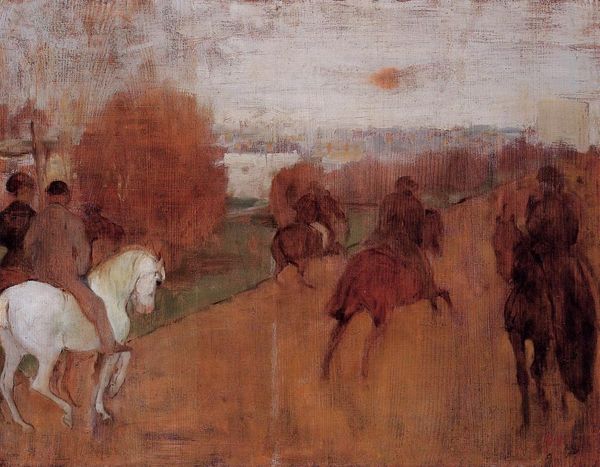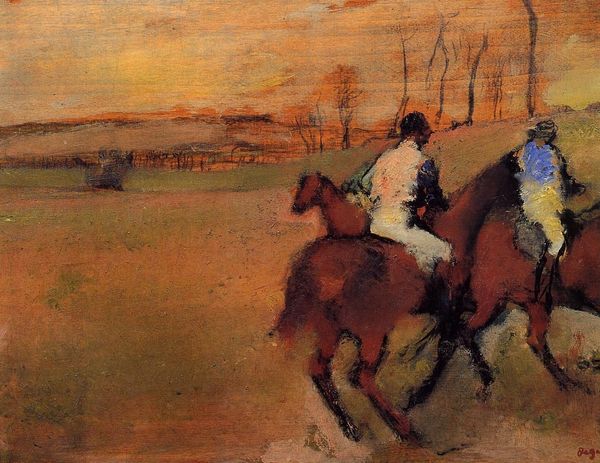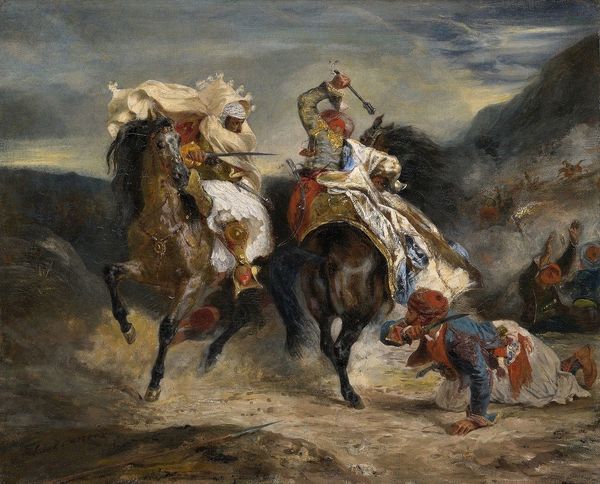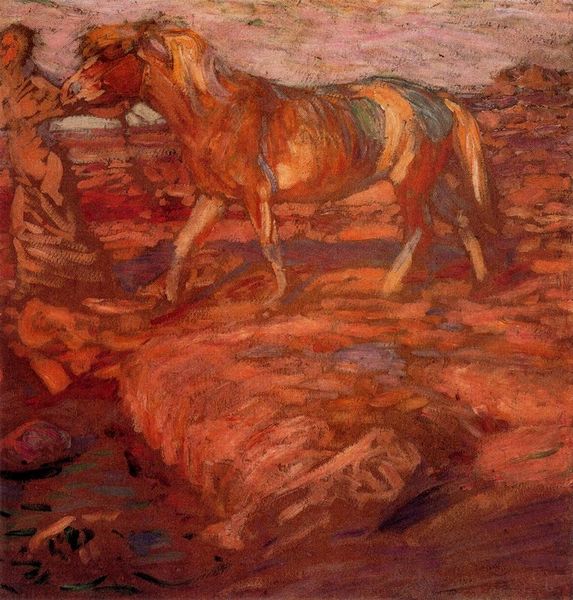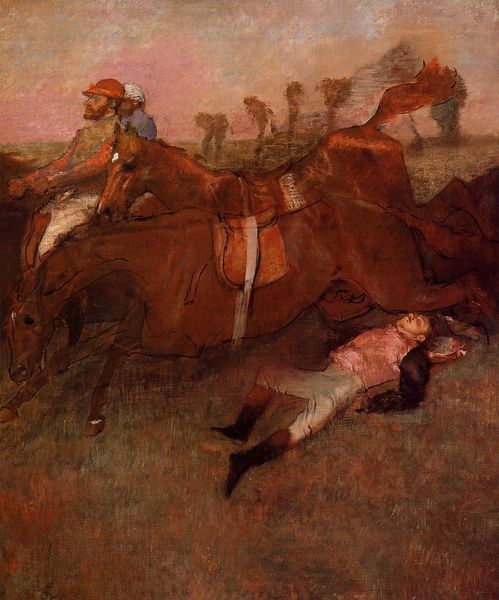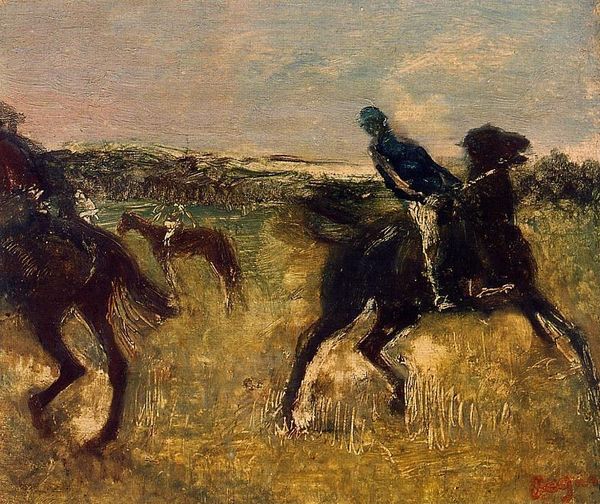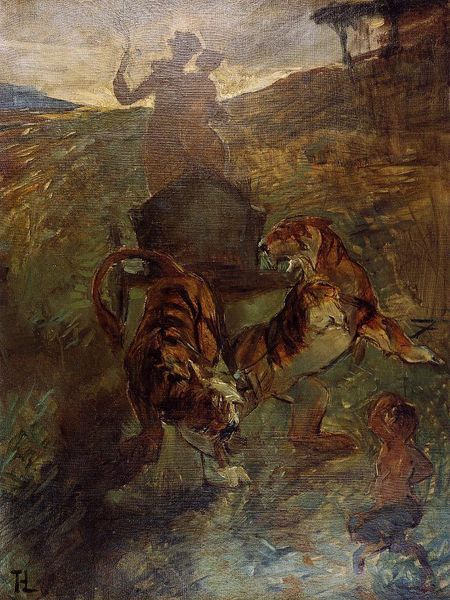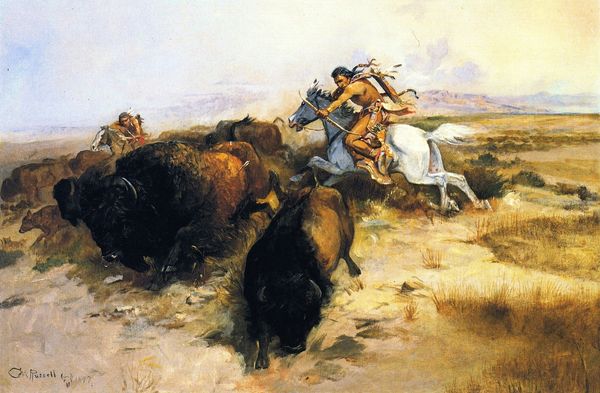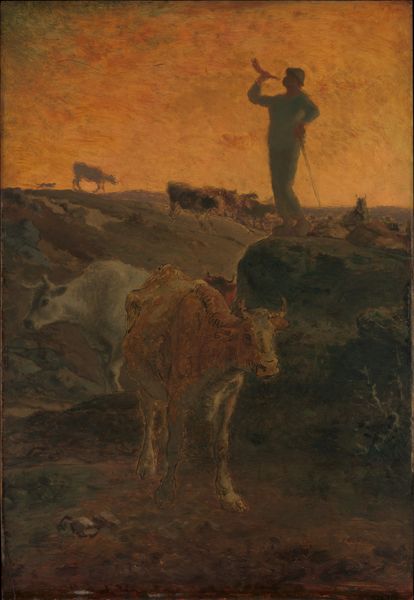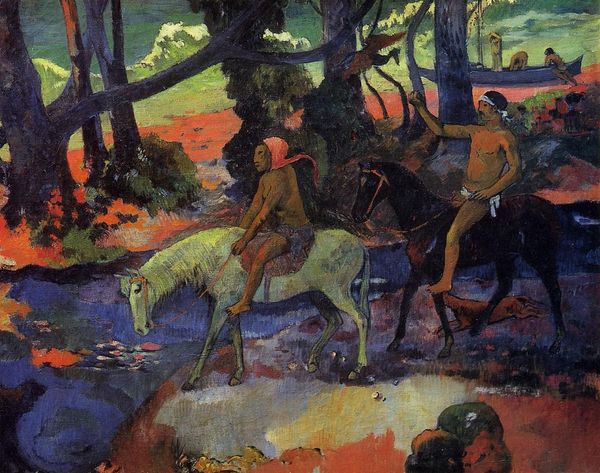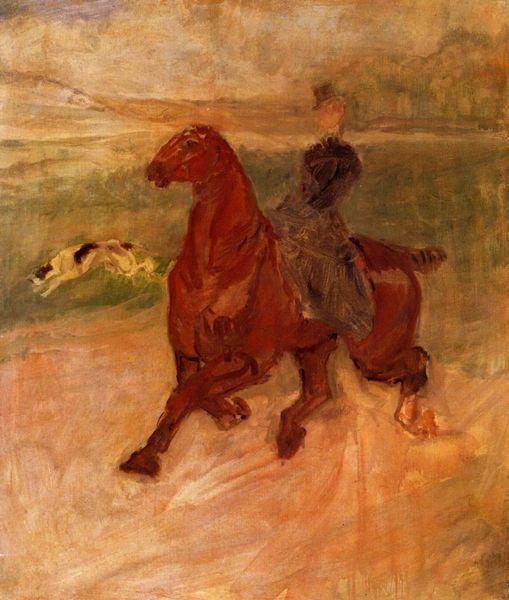
Copyright: Public Domain: Artvee
Editor: Arnold Böcklin's oil painting "Astolf Riding Away with the Head of Orill" from 1873 is incredibly striking! The frantic energy radiating from the horse and rider is palpable, though unsettling with that head dangling alongside. What strikes you first when you look at this? Curator: Initially, I am drawn to the composition’s dramatic diagonal thrust, initiating from the lower left and culminating in the upper right quadrant, propelling the viewer's gaze along a distinct vector. Böcklin's use of impasto contributes a textural complexity, emphasizing the materiality of the medium itself. Note the artist’s employment of color. Does its somewhat restricted palette influence your perception of depth within the landscape, creating a recessive background? Editor: Yes, the muted colors, particularly in the background, almost flatten the space, making the horse and rider more prominent, almost thrusting them forward. But I wonder about the splash of red - its crude rendering looks symbolic in relation to the crude title, "Head of Orill." Is this to reinforce the dramatic content? Curator: The red, a punctum amidst the earth tones, indeed serves to highlight narrative significance. The texture varies: consider the meticulous depiction of the horse's musculature as opposed to the more gestural representation of the landscape, establishing an interesting tension between form and process, wouldn't you agree? Editor: Absolutely, it’s like two different realities colliding on the same canvas. Seeing the texture play off the figures makes the emotional intensity of the moment almost tactile. Curator: Precisely. By focusing on the internal elements—color, texture, composition—we’ve decoded how this painting signifies drama not merely through narrative depiction, but through its very construction. Editor: This exercise really opens up the richness of abstract form beyond the content of a painting.
Comments
No comments
Be the first to comment and join the conversation on the ultimate creative platform.
